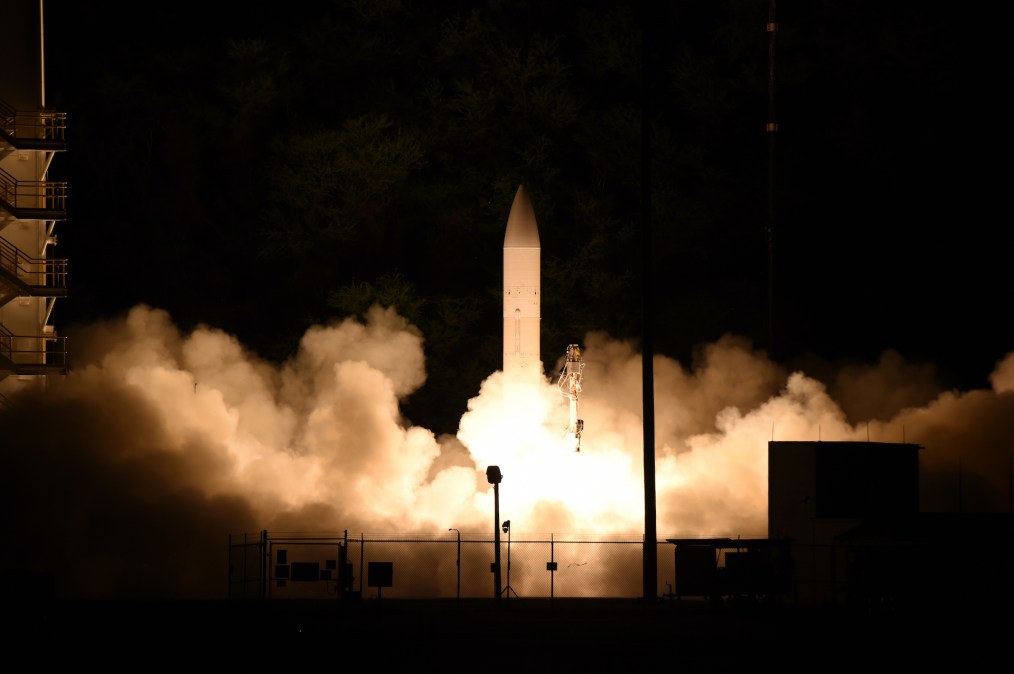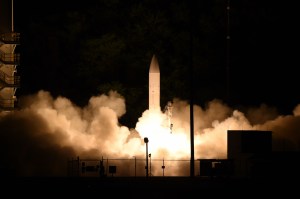DOD fleshing out plans for next generation of hypersonic weapons

The Pentagon hasn’t even fielded its first generation of hypersonic weapons, but it is already planning for what comes next.
The DOD and its industry partners have been building prototypes for multiple variants of hypersonic missiles, and the Pentagon hopes to transition the technology into production and begin fielding the weapons over the next few years. But officials are also looking at developing more advanced capabilities.
“We’re taking our future look and creating a future strategy that we’re calling national hypersonics initiative 2.0.,” Michael White, principal director for hypersonics in the Office of the Undersecretary of Defense for Research and Engineering, said at a conference hosted by ExecutiveBiz on Tuesday. That initiative includes pursuing “disruptive and advanced warfighting capability.”
The initial set of systems that are already in the works include “capability phasing plans,” he noted, which will allow for incremental upgrades. However, the DOD is also pondering “what’s the next set of capabilities that give us that next leap and impact and effect that we can achieve with hypersonic systems,” and how the department can “repopulate” the R&D pipeline to pursue those, White said.
Defense officials are engaging with a broad set of government agencies, industry partners and the broader innovation ecosystem to figure out what the department should do to mature future concepts through organizations such as the Defense Advanced Research Projects Agency or the Strategic Capabilities Office.
The aim is to use investments to replenish the pipeline of advanced capabilities moving forward for both offensive weapons and counter-hypersonics capabilities.
“That activity is moving forward and we’re working with the broader community … to populate that future set of concepts,” White said.
White didn’t lay out all the new concepts that are under consideration but noted that there is interest in reusable hypersonic capabilities that could be used for purposes other than blowing up high-value targets.
“We’re thinking a little bit further out about how do we develop reusable capabilities that would provide leap-ahead systems that allow us to operate both for responsive [intelligence, surveillance and reconnaissance] and targeting as well as delivering effects on the battlefield — and maybe even responsive access to space in, let’s say, the first stage of a two-stage to orbit system. So we are looking at — beyond the expendable weapon portfolios — what we need to do to leverage hypersonic capability for reusable systems,” he said.
Another pillar of the hypersonics 2.0 initiative is to try to make new weapons more affordable so the DOD can buy them in large quantities.
“We will not be able to field capability and buy capability in the numbers we need if these systems are not, essentially, in parity relative to cost with traditional systems,” White said.
To tackle that affordability issue, the DOD included about $500 million in its budget plans for the next three years to bolster the industry’s ability to manufacture systems that would have a lower price tag than today’s prototypes.
“We’re working really hard to identify what the key investment needs are with industry first being driven by the current programs and what they need to move their production techniques and production environment in a direction that allows more affordable fabrication, as well as looking at future automation and how do we bring new technology into the production environment for future capability builds,” White said.
Other pillars of the initiative include investing more money in the science and technology ecosystem and the workforce so they can help develop new concepts for capabilities and production and materials development.
It also calls for boosting funding to improve test and evaluation infrastructure and to achieve “leap-ahead capability” in these areas. The fiscal 2023 budget request includes about $1.5 billion across the future years defense program (FYDP) for that purpose, according to White.
Overall, the Pentagon plans to invest about $25 billion on hypersonics efforts across the FYDP, according to White. Such weapons can travel faster than Mach 5 and are highly maneuverable, making it difficult for traditional missile defense systems to defeat them. The technology is a top modernization priority for the U.S. military as it tries to compete with China and Russia, which have already fielded hypersonic systems. The Army, Navy and Air Force are pursuing ground-launched, sea-launched and air-launched variants, respectively, and the Pentagon is working on boost-glide systems as well as hypersonic cruise missiles.





